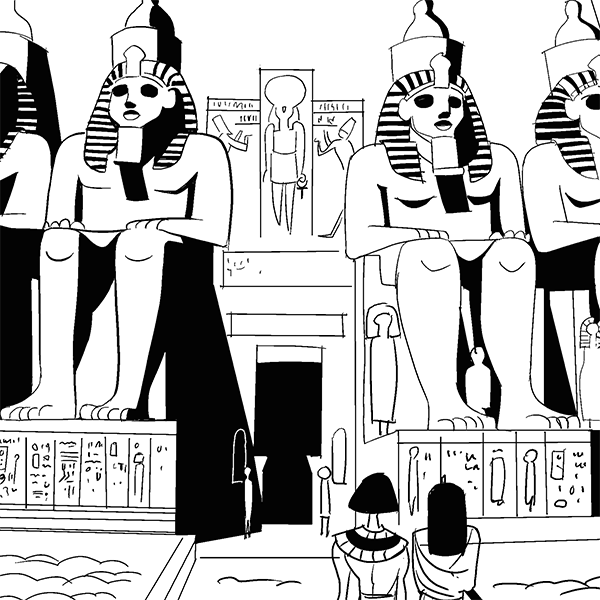After the winds of time blow a civilization to nothing more than dust, usually not much more remains than a few buildings. But these structures, which stood the test of time, are often the crowning achievements of a civilization and its people.
How and why they were built can tell us so much about their culture and history.
The Egyptians were some of the ancient world’s most prolific builders, erecting temples, tombs, and monuments that have come to be testaments to the strength and power of one of humanity’s first societies.
Giza Pyramids
All the world’s great civilizations have their prized construction feat. The French have the Eiffel Tower, India has the Taj Mahal; Angkor Wat in Cambodia, the Great Wall of China, Chichen Itza. The list goes on.
But is there a building in the world more representative of a culture than the pyramid is to Egypt?
These massive pyramids, which stood as the tallest structures in the world for nearly 3,500 years, were built during the height of the Old Kingdom, Egypt’s first period of political unity and economic prosperity.
They were constructed using hand tools and thousands upon thousands of workers. In fact, there are still lots of mysteries surrounding how the Egyptians, with such primitive technology, were able to build such massive pyramids.
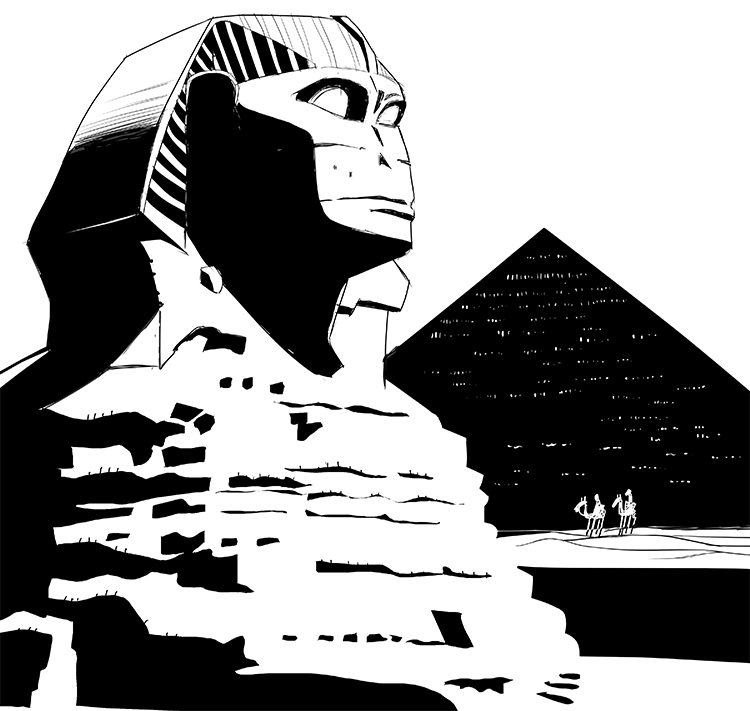
The Great Sphinx of Giza
Not too far from the Pyramids of Giza lies the Great Sphinx of Giza. A mythical cat-like creature, the sphinx was regarded by the ancient Egyptians as a spiritual guardian.
Typically, a sphinx was placed in front of temples and other places of religious significance. Though few were as large and imposing as the one built at Giza.
No one is one hundred percent sure which Egyptian pharaoh had the Sphinx built, but it was most likely Khafre, the pharaoh after Khufu, who built the pyramids.
Perhaps this was Khafre’s way of doing something cool but trying to be a bit different. You know, to make himself stand out from his dad.
But then again, Khafre also built a pyramid, one that looks exactly like Khufu’s. So that’s probably not it.
Instead, given the significance of the sphinx as well as its positioning near the pyramids, it’s more likely that it’s there because the site had considerable religious significance.
It also appears that the sphinx was aligned with the sun and other celestial bodies, suggesting there was in fact more to the decision to build it other than just trying to look cool.
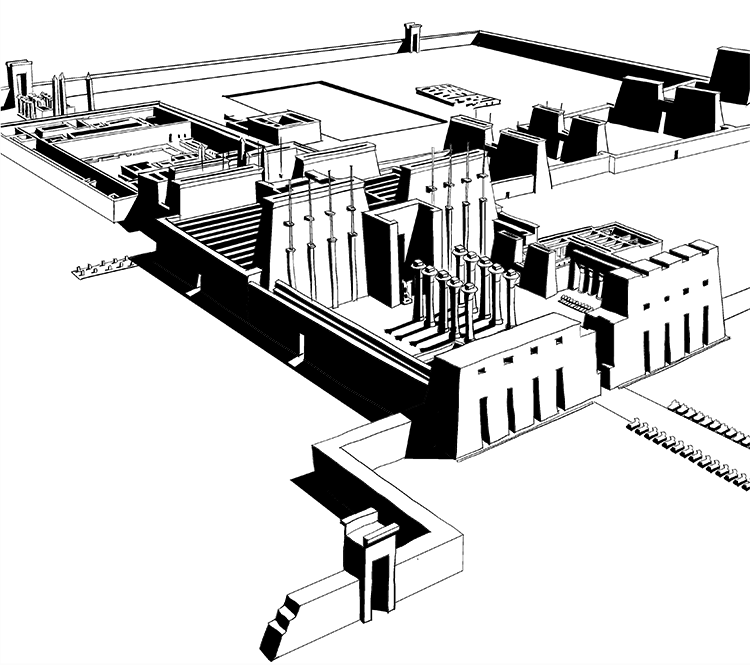
Karnak
There are two regions in Egypt, Upper and Lower. Lower Egypt lies in the Nile River Delta, and due to its wide area of fertile farmland as well as its closeness to the Meditterranean and the rest of the world, it’s traditionally been a bit more “important” than Upper Egypt.
This is not to say that Upper Egypt hasn’t pulled its weight. Because that’s not true. It’s just that the Egyptian capital was more often in Lower Egypt, as were some of its more significant cites.
Several times throughout Egyptian history, though, the pharaohs ruled from Upper Egypt, most often from Thebes.
Responsible for uniting Egypt during the Middle Kingdom, the kings from Thebes were powerful and played an important role in the development of Egyptian society and government.
The Karnak Temple, which was built just outside Thebes as a shrine to Amun, the primary god of Thebes, was a symbol of the city’s power. Added to by all Theban kings, this temple, which became more of a complex over time, is the largest religious site in the world.

Abu Simbel
One of the more visually famous of all Egyptian buildings, Abu Simdel is the name for the Egyptian site where there are pharaohs carved out of the side of the mountain. It’s like an ancient version of Mt. Rushmore.
The temple was commissioned by Ramses II, also known as Ramses the Great. Ramses ruled for more than thirty years and brought Egypt wealth and glory, and so he thought of himself as a pretty big deal. Hence the temple with a giant carving of him and his wife, joined later by two of his successors.
Artistically, this is one of the more impressive ancient Egyptian constructions. This makes sense, though, when we remember it was built during the most prosperous time in Egyptian history, when the Egyptians were truly at the top of the world.
Today, the temple has been moved from its original location to prevent the damming of the Nile River from completely submerging it. Oh, how times change.
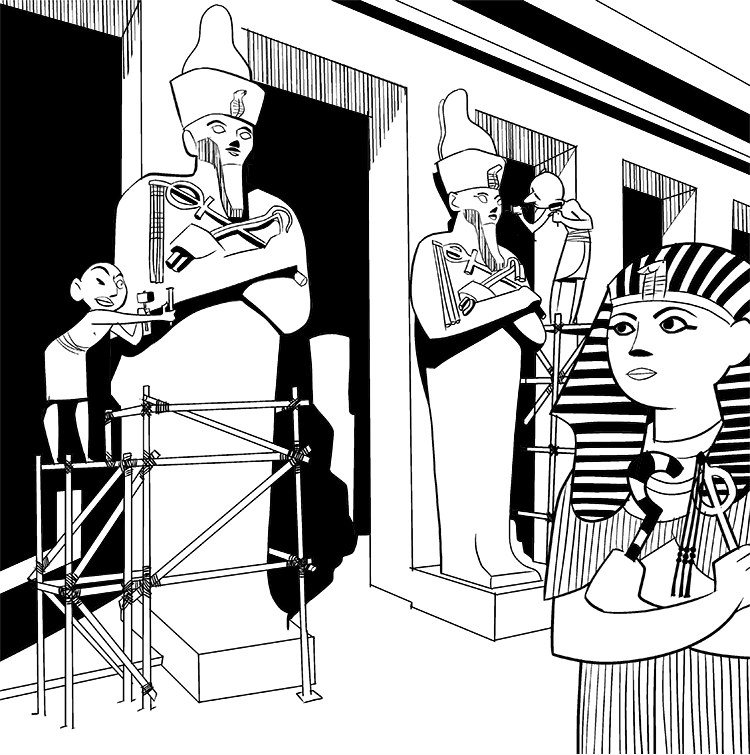
Temple of Hatshepsut
One of the more interesting leaders in Egyptian history was Queen Hatshepsut. Yes, you heard that right. “Queen!” Although there have been lots of queens throughout history, it was much less common in the ancient world. Only a few women ever rose to the top position in Egyptian politics.
Hatshepsut took over control of the throne since her husband died before her son was old enough to take the throne. Initially only meant to be a temporary position, she was so good at her job that she was eventually named pharaoh for real.
Part of the reason she was able to pull this off was by convincing everyone she was the daughter of Amun, the sun god and an all-important deity in ancient Egypt.
Turns out she was pretty convincing and managed to secure her rule. Then she built a killer temple to Amun that remains one of the most important remnants of ancient Egyptian society.
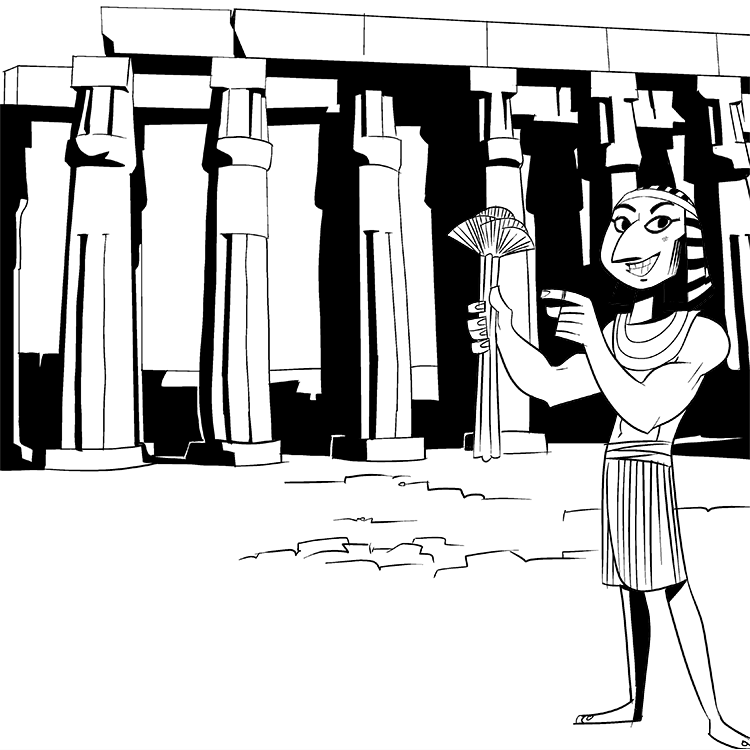
Luxor Temple
Throughout Egyptian history, there was a close connection between the gods and the kings. So close in fact that pharaohs were considered to be gods living in human flesh.
One of the primary duties of any king was to make sure the gods were happy and to carry out their will. And, of course, to build temples in their honor.
This is why the majority of Egyptian temples are built in the name of one god or another. But not the Luxor Temple.
Although connected to the gods Amun, Mut, and Chons, the three most important gods of nearby Thebes, the Luxor Temple was built for the kings.
After several centuries under foreign rule, Egypt gained its independence and united behind Thebes, giving rise to the Middle Kingdom.
Many of the kings who would follow would do their coronation ceremony at the Luxor Temple to symbolize the return of the gods to their rightful land through the return of the rightful king.
It was perhaps this homage to glory and success that inspired the Luxor Hotel & Casino in beautiful Las Vegas, although it’s hard to imagine since the mock structures in front of the building are from Giza! Jokes on them!
Valley of the Kings
Although not technically a building, the Valley of the Kings is still an important construction site from ancient Egypt. The site of some 63 tombs carrying more than 500 people, the Valley of the Kings was the place to get buried for the Egyptian elite.
Some tombs were more modest, but others, especially those made for kings or other nobility, were massive and ornately decorated.
Legends speak of the great treasures that once lined these tombs. But by the time modern explorers found them, they had been emptied by bandits from another time.
One tomb that wasn’t robbed, that of King Tutankhamun, known more commonly as King Tut, has provided students of Egyptian history with wonderful insight into the lives of Egyptian rulers, although we know very little of King Tut himself.
The existence of the Valley of the Kings serves as a nice reminder of how much importance the Egyptians placed on death and the afterlife. They knew they were headed to the promised land, and they would do anything they could to make sure they got there in style.
A Lasting Legacy
The buildings that have remained in Egypt over so much time make up a big part of this ancient culture’s legacy. And while they surely built so much more, what still stands demonstrates the wealth, power, productivity, and resolve of the Egyptians. Of course, would we expect anything else from one of the world’s most successful civilizations?
Written by Matthew Jones
Illustrated by Pablo Velarde Diaz-Pache
